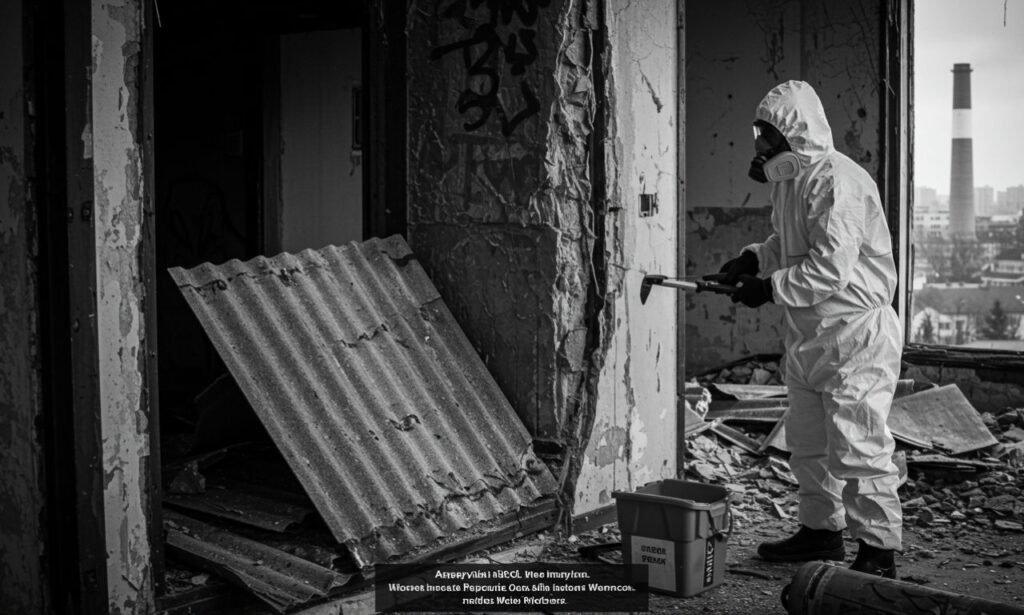Asbestlint is a term often connected to materials containing asbestos, a substance once widely used in construction and industry. While durable and heat-resistant, asbestos materials like asbestlint can release fine fibers that pose serious health hazards when inhaled. Understanding what asbestlint is, why it is dangerous, and how to manage it safely is essential for homeowners, workers, and communities.
This article explores asbestlint in detail, from its meaning and uses to risks, regulations, and safe handling practices.
What Is Asbestlint?
Asbestlint typically refers to asbestos-containing fibers or residues that can be found in insulation, cement, tiles, and older construction materials. These fine particles are not dangerous when intact, but once disturbed, they can become airborne and enter the lungs.
The name highlights the fibrous, lint-like texture of asbestos when it breaks down. This texture makes asbestlint lightweight and easy to inhale, which is where the health risks begin.
Historical Uses of Asbestlint
Asbestlint gained popularity in the 20th century because of its durability and resistance to heat, fire, and chemicals. It was used in:
-
Insulation in homes, schools, and factories.
-
Floor tiles and roofing materials.
-
Cement products for added strength.
-
Automotive parts like brakes and clutches.
At the time, asbestlint was considered a miracle material. Unfortunately, its health dangers only became clear later.
Health Risks of Asbestlint
Exposure to asbestlint is hazardous. Once inhaled, asbestos fibers can remain in the lungs for decades. Common health issues include:
-
Asbestosis – A chronic lung condition causing scarring and breathing problems.
-
Lung Cancer – Long-term exposure increases risk significantly.
-
Mesothelioma – A rare but deadly cancer affecting the lining of the lungs.
Even short-term exposure to asbestlint can be harmful if fibers are concentrated. This is why awareness and caution are critical.
Where Is Asbestlint Found Today?
Although many countries have banned asbestos, asbestlint still exists in older structures and products. Common locations include:
-
Old homes built before the 1980s.
-
Schools or office buildings with original insulation.
-
Factories with outdated construction materials.
-
Shipyards and industrial sites.
Workers in renovation, demolition, or repair are most at risk of disturbing asbestlint.
Regulations Around Asbestlint
Due to health concerns, strict laws now regulate the handling of asbestlint. For example:
-
Many countries ban its use in new products.
-
Safe removal can only be done by licensed professionals.
-
Disposal is regulated to prevent contamination.
These rules are in place to protect both workers and the public from exposure.
How to Identify Asbestos
Identifying asbestos is difficult without professional testing. However, some signs may suggest its presence:
-
Materials installed before the 1980s.
-
Fibrous insulation in attics or walls.
-
Old vinyl flooring or cement products.
If you suspect asbestos, never disturb it yourself. Instead, contact certified asbestos professionals.
Safe Handling of Asbestos
If you discover asbestos in your home or workplace, here are safety measures:
-
Do not touch or disturb it – Leave the material intact if possible.
-
Avoid sweeping or vacuuming – This can release fibers into the air.
-
Seal the area – Prevent others from entering until professionals arrive.
-
Call experts – Only trained professionals should remove asbestos.
Handling asbestos incorrectly can spread contamination, increasing risks for everyone.
Professional Removal of Asbestos
Licensed asbestos removal teams follow strict guidelines to safely eliminate asbestos:
-
They wear protective suits and respirators.
-
They use specialized equipment to seal off areas.
-
They carefully remove and package asbestos materials.
-
They dispose of it in regulated facilities.
This process ensures that no fibers escape into the surrounding environments.
Preventing Exposure to Asbestos
Prevention is the best protection. To avoid exposure:
-
Conduct inspections before renovating older buildings.
-
Educate workers about asbestos dangers.
-
Use protective gear in high-risk environments.
-
Hire only certified removal experts for asbestos projects.
By being proactive, communities can minimize the dangers posed by asbestos.
Asbestos and Environmental Impact
Asbestos not only affects human health but also harms the environment. Improper disposal can contaminate soil and water. Wildlife can also be exposed when asbestos waste is left unmanaged.
This makes responsible disposal critical for environmental protection.
Awareness Campaigns Around Asbestos
Public awareness campaigns have played a huge role in reducing asbestos risks. Governments and health organizations run programs to:
-
Educate workers about hazards.
-
Inform homeowners about inspections.
-
Promote safe practices for renovations.
These campaigns save lives by encouraging responsible handling.
Alternatives to Asbestlint
Today, many safer alternatives exist for construction and insulation, including:
-
Fiberglass
-
Cellulose insulation
-
Mineral wool
-
Modern ceramic fibers
These materials offer similar benefits without the health risks associated with asbestlint.
The Future of Asbestlint Management
As more old buildings are renovated, asbestlint will continue to surface. The future of its management lies in:
-
Stricter global bans.
-
More affordable testing and removal.
-
Advanced safety technology for workers.
-
Ongoing public education.
By combining regulation, awareness, and safe alternatives, society can eventually eliminate risks tied to asbestlint.
Conclusion
Asbestlint represents one of the most dangerous legacies of past construction practices. While once valued for durability and heat resistance, it is now known for its severe health risks. Proper identification, strict safety practices, and reliance on professionals are essential for safe management.







